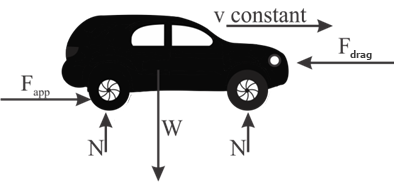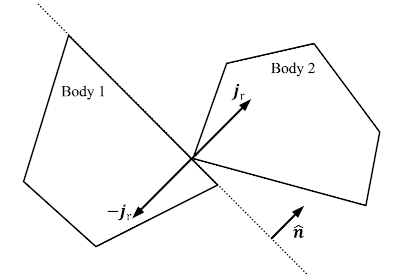Newton's Laws of Motion Lesson
The Three Laws of Motion
Sir Isaac Newton's three laws of motion lay the groundwork for what we study in classical mechanics, the physics study of how objects move. The three laws are given as:
Newton's first law — the law of inertia — an object at rest or at constant velocity stays in that state unless acted on by a net external force.
Newton's second law — the law of force and acceleration — the net external force acting on an object is equal to its mass times acceleration, such that F = m×a.
Newton's third law — the law of reaction forces — when an object exerts a force on a second object, the second object exerts a reaction force on the first object that is equal in magnitude and opposite in direction to the original force.

The First Law Explained
Newton's first law of motion describes the concept of inertia. By definition, inertia is the tendency of an object to remain in its current state unless acted on by a net external force.
The most important detail of the law of inertia is that an object's state depends on the net external force. An object can have multiple external forces acting on it, but if they cancel each other out such that the net force is zero, the object is in equilibrium, or physical balance. If the net external force is not zero, then the object is not in equilibrium and its state will change.

The car above has several external forces acting on it, but they all cancel each other out such that the net external force is zero and the car is in equilibrium. The car's driving force Fapp is equal in magnitude to the drag force Fdrag. The car's weight W is equal in magnitude to the sum of all tires' normal force N.
The horizontal forces cancel each other out and the vertical forces cancel each other out. Therefore, there are external forces acting on the car, but there is no net external force.
If, for example, the car increased its driving force Fapp such that it became greater in magnitude than the drag force Fdrag, the car's velocity would increase, and its state would change.
The Second Law Explained
Newton's second law of motion provides us with one of the most important equations in physics — F = m×a, where F is the net external force acting on the object, m is the mass of the object, and a is the acceleration experienced by the object.
The force equation can be rearranged to solve for each parameter:
- F = ma
- a = F⁄m
- m = F⁄a
We can maneuver variables around this equation to solve for any of the three parameters. We can also apply this formula along any direction at our convenience, for example, to solve along the x-axis only we would use Fx = m×ax.
The Third Law Explained
Newton's third law of motion provides the basis for reaction forces. A reaction force is opposite in direction and equal in magnitude to the original force and always occurs when a force is applied.

Reaction forces are responsible for many common aspects of reality, an example being the weight we feel from Earth's gravity. Gravity is an external force that pulls us down to Earth's surface, where our body applies a force called weight to the ground.
The ground exerts a reaction force equal in magnitude and opposite in direction to our weight, which pushes up into the part of our body in contact with the ground. This is what we feel in our feet when standing. The sensation of gravity is not a direct result of our weight, it is a direct result of the reaction force from the ground.

